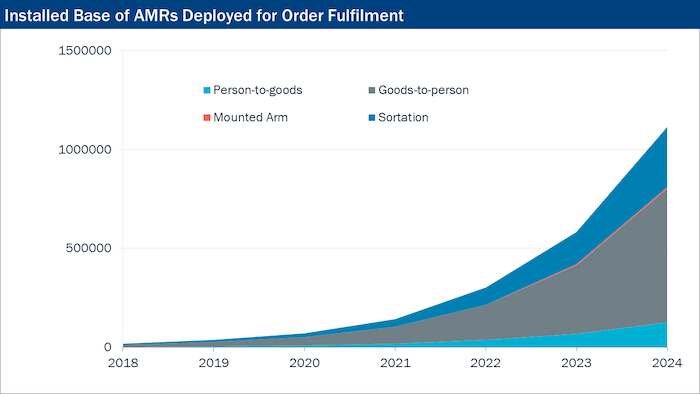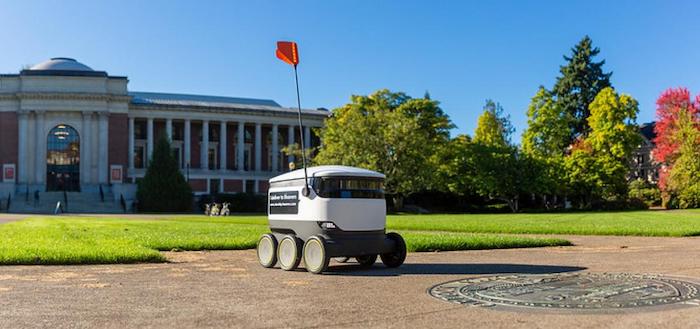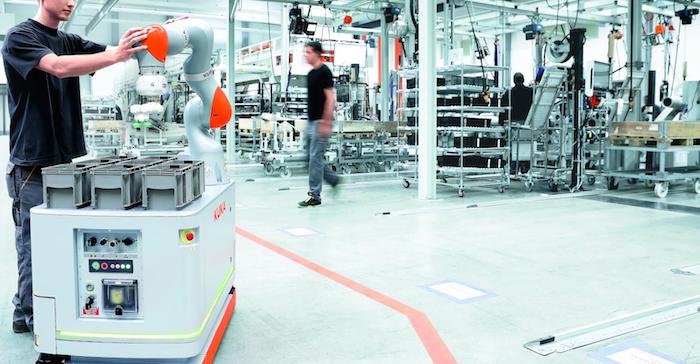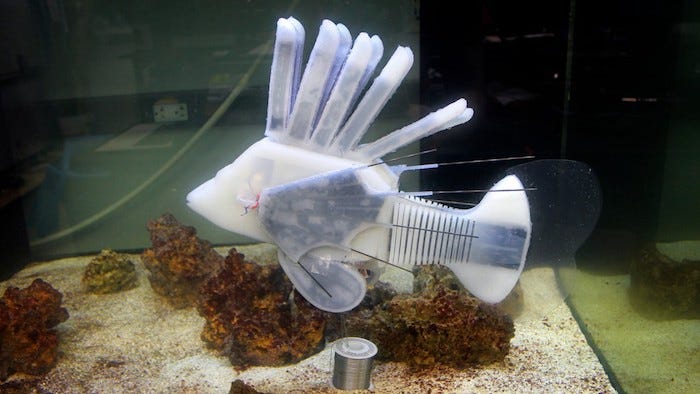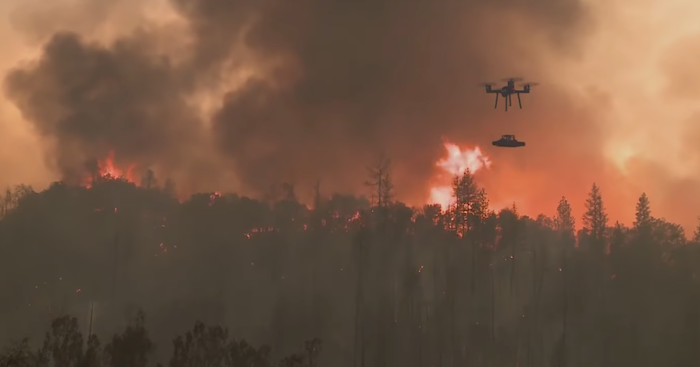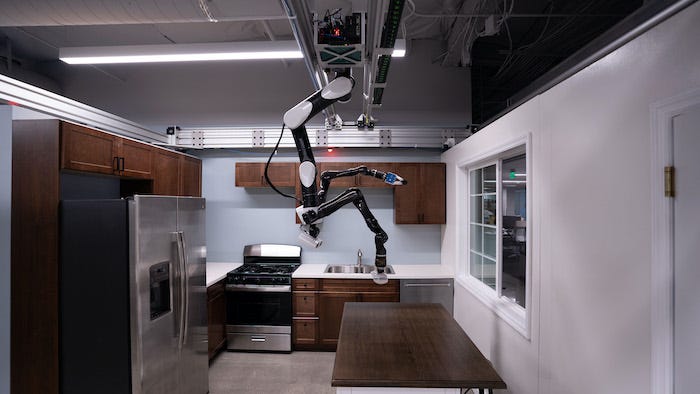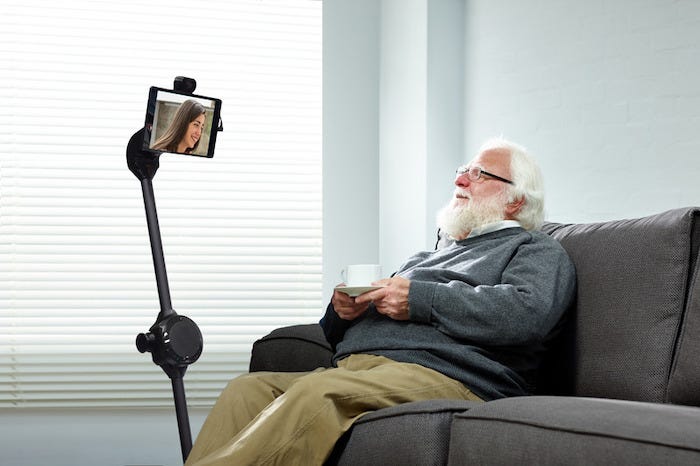2020 Robot Trend Could Explode in 2021 and Beyond
Mobile robot growth surged in 2020, covering land, air, and water. What will the next decade bring?
December 16, 2020
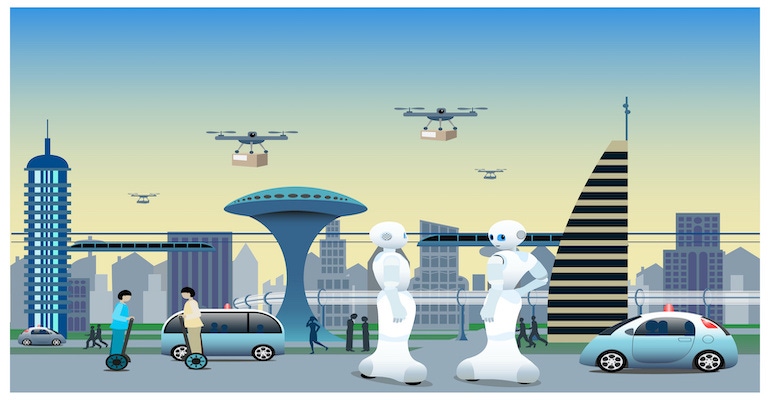
One of the key robotic trends that transcended all markets in 2020 and will continue over the next decade is mobility – and that’s not even counting autonomous cars. This mobility trend combines technologies from all key sectors like sensors, actuators, embedded vision, AI markets, edge computing, and more. Implementation of robotic mobility is growing on the manufacturing floor, hospitals, home care across the ground, air, and water.
According to a recent report from Interact Analysis, the mobile robot market revenues are forecasted to grow by nearly a quarter in 2020, despite the global chaos caused by the COVID-19 pandemic. Revenues are set to reach $2.4 billion this year and will surge by another 50% in 2021 as the impact of the pandemic leads to greater demand for mobile automation.
Sales of automated guided vehicles (AGVs), which perform material handling tasks automatically without human intervention, but are limited to navigation using physical infrastructure, will lag behind sales of the more advanced autonomous mobile robots (AMRs), which can navigate without the need for external markers or infrastructure, the report explained.
Despite the pandemic leading to delays in the orders in the first half of 2020, Interact Analysis predicts revenue growth this year of 11% for AGVs, and 45% for AMRs, an average of 24% growth across the whole sector. Healthy figures, though the pre-pandemic 2020 growth forecast for the sector was 60%. But COVID-19 will be a game-changer for the sector in the next few years, with sales spiraling in the run-up to 2024.
|
Installed base of autonomous mobile robots. |
Mobile robots (not counting autonomous car vehicles) are driving one of the biggest trends in 2020 and the following decade. Here is just a sampling of applications where robot mobility is conquering travel on the ground, in the air, and even in water.
Robot Mobility – Food Delivery
In October of this year, a fleet of 20 small Starship delivery robots began food orders to students, staff, and faculty across Oregon State University’s more than 500-acre campus. OSU was the first campus in the state to have such autonomous delivery robots.
The box-shaped robots are small, with six wheels and a rounded white body, topped with a bright orange flag for better visibility. The robots have mapped the OSU campus using GPS and are able to find locations around the grounds. They can carry up to 20 pounds of food. They use a combination of sophisticated machine learning, artificial intelligence, and sensors to travel on sidewalks and navigate around obstacles.
The computer vision-based navigation helps the robots to map their environment to the nearest inch. The robots can cross streets, climb curbs, travel at night, and operate in both rain and snow. A team of humans monitor their progress remotely and can take control if needed.
The robots are part of Starship Technologies’ fleet which has completed more than 500,000 autonomous deliveries to date. The company’s goal is to build a network of robots to serve people anywhere and most anytime. Their robots can travel as far as 6km, carrying parcels, groceries, and food. Once you place your order you can follow the path of the robot using the same app on your smartphone.
|
Robots roam campuses with food. |
Mobility in Manufacturing
Another huge growth area for mobile robots is in the manufacturing space. Advancements in robotics continue to reshape packaging automation, with mobile robots becoming a more common choice for tasks such as materials transport and machine loading and unloading.
Robot systems that feature an industrial robot on top of a mobile platform can help with the optimization of material flow and packaging processes. Mobile robots’ ability to move around the plant floor also offers production flexibility, as the units can travel among various packaging workstations and perform relevant work at each one. (Image Source: Kuka iiwa)
|
The Kuka KMR iiwa model combines a mobile platform with the lightweight Kuka LBR iiwa robot, which is suited to sensitive, human-robot collaborative tasks, including delicate assembly work. |
Motion from Fluid Flow
Researchers at Cornell have demonstrated the creation of a circulatory system (robot blood?) for a robotic fish. This circulatory system serves both as an actuator to move the fins – fluid for propulsion and as a way to distribute energy. The fluids carry ions through the plastic body of the fish.
According to the report, the ions are gathered from batteries located throughout the circulatory system. As the fluid flows through the cathode and anode of the batteries it harvests ions that can be used by microactuators activating the fins. The benefit of using fluid instead of wires from the batteries to the actuators is that the fluid both moves the fins and transports the ions – thus saving the cost and weight of the wires.
Implementing robotic motion in this was is yet another way that researchers mimic the human body. For example, humans store energy in fat reserves spread across the body, and our circulatory system transports oxygen and nutrients to power trillions of cells. But today’s robots are far less integrated, with a solid battery in one location, motors in another, and the cooling systems and other components scattered throughout. (Image Source: Cornell, James Pikul)
|
An aquatic soft robot, inspired by a lionfish, designed and prototypes at Cornell. |
Robots in the Air
The great forest fires that consumed the western half of the U.S. this year have spawned interest in the use of drone technology to help fight and even prevent the outbreak of such fires. Currently, drones with traditional cameras are used to collect vital information about ongoing fires. Armed with this real-time information, firefighters learn about imminent dangers to help them focus their efforts where they can do the most good. (Image Source: Parallel Flight, Youtube)
Are there other drone-enabled technologies that might be applied to fighting forest fires? One possibility is hyperspectral technology, which provides images in greater detail than traditional-visible-spectrum Red-Green-Blue (RGB) camera systems. This additional detail permits the human viewer or machine learning (ML) system to “see” more details about the image, i.e., the materials that make up the image. Current implementation areas for hyperspectral imaging include the medical, optical sorting, remote sensing, and even agricultural markets.
|
Drones fight forest fires. |
Robots Walk on the Ceiling
To prepare for the home of the future, engineers from the Toyota Research Institute (TRI) are investigating the idea of integrating robotics directly into the home to do common household tasks. Instead of robots needing to navigate a cluttered floor, it could travel on the ceiling and be tucked out of the way when it's not needed.
To explore this idea, researchers built a prototype robot that flips the current mobile manipulator on its head. The robot, called the gantry robot, is now effectively upside down and moves about on tracks pre-installed on the ceiling.
Using the ceiling instead of the ground for robot motion is particularly appealing in Japan, where homes and other residential dwellings are very small, packed with furniture and objects, and have no room for a floor dwelling robot.
|
Home robot roams on the ceiling. |
Dr. Roboto Comes to You
Outside of the factory and warehouse floors, human-friendly collaborative robots or cobots are finding acceptance in the medical and hospital halls. In addition to their gentleness, these mobile robots can’t be infected by biological viruses like COVID-19. Robotic systems have been especially important in clinical care, such as in disease prevention, diagnosis and screening, and patient care.
Several companies have designed robots to help alleviate some of the more mundane tasks that nurses must perform. One of those companies is Diligent Robotics, whose bot “Moxi” is equipped with a flexible arm, gripper hand, and mobility that enable it to find lightweight medical resources, navigate a clinic’s hallways and drop them off for the nurse.
Another function of these robots in recent months has been to connect families with loved ones suffering from COVID-19 who are confined to hospital ICU wards. They have also been used to act as telepresence companions to elderly shut-ins, to inspect an airplane engine up close, and to sell art in a gallery. Other robots have been equipped to shine UV light on surfaces to kill germs. (Image Source: OhmniLabs)
|
Medical telepresence mobile robots. |
John Blyler is a Design News senior editor, covering the electronics and advanced manufacturing spaces. With a BS in Engineering Physics and an MS in Electrical Engineering, he has years of hardware-software-network systems experience as an editor and engineer within the advanced manufacturing, IoT and semiconductor industries. John has co-authored books related to system engineering and electronics for IEEE, Wiley, and Elsevier.
About the Author(s)
You May Also Like

